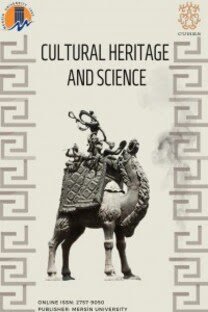Technologies for Architectural Restoration Works in Eighteenth Century Rome: The Birth of the Modern Scaffolding Practice
In 17th and 18th century Rome, building site technology depended on a consolidated empiricism rather than on formalized cognitive processes. Technologies inherited from the Imperial Rome continued to prevail, renewed by the experience of the greatest Renaissance and Baroque architects, and, above all, by of the colossal building site of the new St. Peter’s. Starting from the second half of 17th century, the design of restoration scaffolding became indispensable for the conservation of the Vatican Basilica and its precious decorations, as well as for the conservation of the Pantheon, the Basilica of St. John in Lateran, and for other important monuments’ maintenance, in Italy but also in some European nations. However, the development of scaffolding went almost unnoticed by the principal treatises on architecture, nor did it even find its way into technical handbooks. There are just a few exceptions in the contemporary literature on artistic techniques in 18th century. These works fit into the general context of the lavishly illustrated machine books, which had flourished during the 16th and 17th centuries, a genre, which gradually ended in the early 18th century, due to the changing attitude towards technology.
Keywords:
Architectural treatises, Scaffolding, Building site, Architectural Restoration St. Peter’s Basilica,
___
- Baudouin A (1908). Der Zimmerer-Meister. Ein Überblick über die gesamten Zimmerungen und ihre Vorbedingungen in vier serien. Wien.
- Borgnis G A (1818-1820). Traité complet de mécanique appliquée aux Arts: Mouvement des Fardeaux. Paris.
- Castelli e Ponti (1743). Castelli e Ponti di Maestro Niccola Zabaglia: con alcune ingegnose pratiche e con la descrizione del Trasporto dell’Obelisco Vaticano e di altri del Cavaliere Domenico Fontana (Castles and Platforms by Maestro Niccola Zabaglia: with some ingenious practices and a description of the Transport of the Vatican Obelisk and others by Domenico Fontana). Roma.
- Castelli e Ponti (1824). Castelli e Ponti di Maestro Niccola Zabaglia […], coll’aggiunta di macchine posteriori e premesse le notizie storiche della vita e delle opere dello stesso Zabaglia (Castles and Platforms by Maestro Niccola Zabaglia […] with the addition of later machines and historical information on the life and works of Zabaglia himself). Roma.
- Cavalieri San-Bertolo N (1827). Istituzioni di architettura statica e idraulica (Institutions of static and hydraulic architecture). Bologna.
- De la Hire G P (1702). L’Art de charpenterie de Mathurin Jousse. Corrigé and augmenté de ce qu’il y a de plus curieux dans cet Art, and des machines les plus necessaires à un Charpentier. Paris.
- Diderot D & Le Rond d'Alembert J B (1751-1780). Encyclopédie. Paris.
- Dubourg Glatigny P (2017). L’architecture morte ou vive. Les infortunes de la coupole de Saint- Pierre de Rome au XVIII siecle, École française de Rome. Rome.
- Dumont G M (1763). Détails des plus intéressantes parties d'architecture de la Basilique de St. Pierre de Rome. Paris.
- Émy A R (1841). Traité de l’art de la charpenterie. Paris.
- Fontana D (1590). Della Trasportatione dell'Obelisco Vaticano et delle Fabriche di Nostro Signore Papa Sisto V (The Transportation of the Vatican Obelisk and the Fabrics of Our Lord Pope Sixtus V). Roma.
- Holzer S M & Marconi N (in press). Nicola Zabaglia’s Scaffoldings for the Maintenance of Architectural Space in St. Peter’s Basilica and throughout Europe in the Seventeenth to Nineteenth Centuries. Creating place in early Modern European Architecture, ed. by E. Merrill. Amsterdam. 95-127.
- Holzer S M (2015). Statische Beurteilung historischer Tragwerke. Band 2: Holzkonstruktionen. Berlin. Jousse M (1627). Le theater de l’art de la charpenterie, Griveau. Paris.
- Krafft J C (1805). Plans, coupes et élévations de diverses productions de l'art de la charpente. Paris.
- Krafft J C (1856). Traité des échafuadages ou choix des meilleurs modeles de charpentes. Paris.
- Marconi N (2004). Edificando Roma barocca. Macchine, apparati, maestranze e cantieri tra XVI e XVIII secolo [Building Baroque Rome. Machines, equipment, workers and construction sites between the 16th and 18th centuries]. Città di Castello.
- Marconi N (2006). Tradition and technological innovation on Roman building sites from the 16th to the 18th century: construction machines, building practice and the diffusion of technical knowledge. Practice and Science in Early Modern Italian Building. Toward an Epistemic History of Architecture, ed. by H. Schlimme. Milan. 137-152.
- Marconi N (2009). Technicians and master builders for restoration of the Dome of St. Peter’s in Vatican in the 18th Century: the contribution of Nicola Zabaglia (1664-1750). Proceedings of Third International Congress on Construction History. Cottbus (Germany), May 20-24, 2009, Cottbus 2009, vol. 2, pp. 991-1000.
- Marconi N (2015). Castelli e Ponti di maestro Nicola Zabaglia. Apparati per il restauro nell’opera di mastro Nicola Zabaglia per la Fabbrica di San Pietro in Vaticano [Castles and Platforms by Master Nicola Zabaglia. Restoration equipment in the work of master Nicola Zabaglia for the Fabbrica di San Pietro in the Vatican]. Foligno.
- Mazzocchi L (1872-1879). Trattato su le costruzioni in legno (Treatise on wooden constructions). Milan. Piranesi F (1790). Raccolta de’ templi antichi (Collection of Ancient Temples). Roma.
- Pizzagalli F & Aluisetti G (1827). L’arte pratica del carpentiere (The practical art of carpentry). Milan.
- Rondelet J B (1802-1810). Traité théorique et pratique de l’art de bâtir. Paris.
- Tarbuck E L (1857-59). The Encyclopaedia of practical carpentry and joinery. Leipzig.
- Valadier G (1828-33). L’architettura pratica (The practical architecture). Rome.
- Viollet Le Duc E E (1858-1868). Dictionnaire raisonné de l’architecture français du XIème au XVIème siècle, 10 voll. Paris. V. 115-116
- Yayın Aralığı: Yılda 2 Sayı
- Başlangıç: 2020
- Yayıncı: Mersin Üniversitesi
